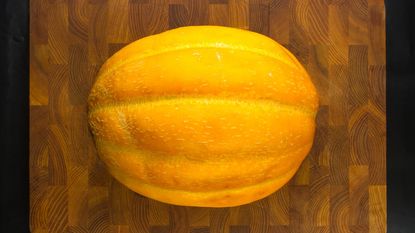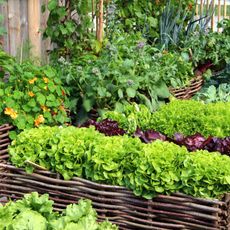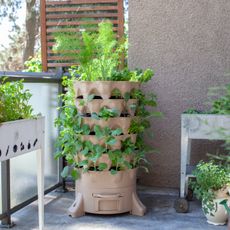History Of Algerian Melons


If you're looking to expand your melon growing horizons, try growing d'Alger heirloom melons. It is true that many people are underwhelmed by its mild flavor, but that may be because they haven't tried cooking it. While, typically, we think of melons as fruit and eat them fresh, melon d'Alger historical information informs us otherwise.
History of Algerian Melons
The history of d'Alger or Algerian melons dates back to ancient Roman times where they were held in high esteem and available only to the very wealthy. This heirloom in the Cucumis genus originally hails from North Africa and is one of the oldest heirloom melons still available today. D'Alger melons are only one of a large group of Algerian melons that have evolved over time due to the plentiful biodiversity of their North African habitat. They are lovely ribbed fruits with dark green to black rinds splashed with silver. The rind morphs to yellow with reddish splashes of color as the melons ripen. These melons are extremely fragrant with smooth, creamy flesh reminiscent of cantaloupe. The rich history of Algerian melons is evoked in surviving mosaics from North African archaeological sites. In these, servants are depicted serving the fruit to the gentry of that time. Melon d'Alger information can also be gleaned from ancient writings of the Byzantine Greeks, which describe cooked melons served with caviar and other decadent ingredients. The cooking technique used at this time is called yiachni form the ancient Greek word "achnizo," meaning steam. The technique is called "sweating" today and consists of gently cooking the melon with chopped garlic, shallot or onions, and olive oil in a covered pan that steams the food while preserving the flavors.
Growing Algerian Heirloom Melons
Algerian melons, like other melons, are heavy feeders and heat lovers. They should be planted in full sun in soil that has been amended with plenty of rich compost. Direct sow the seeds in hills when soil temps are at least 70 degrees F. (21 C.) or start them inside. If you start the seeds indoors, allow the seedlings to harden off before transplanting them into the garden. Mulch beds with straw to retard weeds and help retain moisture. Side dress with fish emulsion once the blossoms have set. When the fruit is ready to harvest, by all means, try eating it out of hand, but these ancient heirlooms deserve a shot at the ancient Byzantine cooking technique too. Maybe it's time to rethink melon's place as a fruit and treat it as a vegetable.
Gardening tips, videos, info and more delivered right to your inbox!
Sign up for the Gardening Know How newsletter today and receive a free download of our most popular eBook "How to Grow Delicious Tomatoes."

Amy Grant has been gardening for 30 years and writing for 15. A professional chef and caterer, Amy's area of expertise is culinary gardening.
-
 Crops for Urban Growing: 8 Edible Plants For Urban Gardens
Crops for Urban Growing: 8 Edible Plants For Urban GardensUrban edible gardening lets your yard do double duty of beauty and practicality. Have fun combining edible plants with ornamentals.
By Teo Spengler
-
 Clever Vertical Vegetable Garden Ideas For Small Spaces – 7 Ways To Save Space
Clever Vertical Vegetable Garden Ideas For Small Spaces – 7 Ways To Save SpaceShort on garden space? Learn some vegetable garden ideas for small spaces that are fun and easy.
By Mary Ellen Ellis